Review of Whitewall of Sound
(Issue #35, Northwest Concrete and Visual Poetry, CD-Rom, guest edited by Nico Vassilakis) |
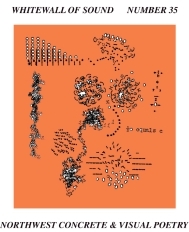
If you are unfamiliar with the format of Whitewall of Sound Issue #35 —Northwest Concrete & Visual Poetry (published August 2006 and guest edited by Nico Vassilakis), you might assume it to be simply a collection of pieces somehow tied to the concept of sound and subsequently mired within it. However, this surprisingly enjoyable compilation is not just a collection sounds, but instead is a multimedia collection of sounds, sights, and words all focused on the beauty of alphabets and the inherent human partnerships therein.
The collection is from first glance onwards a unique sort of anthology and document of a large scale kind of collaboration. Highlights of this language collaborative include mARK oWEns & Maria Jose Gonzalez's video “Lengua(je,” which for its entire four and a half minute duration meditates on the concept of human connection in the most intimate of ways, as two collaborators (lover, friends, or fellow artists—it is hard to distinguish) pass alphabet noodles from alphabet noodle soup between each other using only the movement of their tongues. The resulting feeling from this quite pornographic piece is an intense feeling of nausea resulting from the uneasy camera angles and focus on strange tongues moving so serpent-like. As the viewer, you are whipped around in the joyful giddiness of the physicality of lovers. This feeling is reminiscent of Juliana Spahr's classic Fuck You-Aloha-I Love You (2001), in which repeating phrases and themes twist and turn gracefully to make the reader dizzy with love, or Gertrude Stein's Tender Buttons (1914) in which objects are given to the readers with enough weight to make them punch-drunk at their beauty. oWEns and Gonzalez's mastery of the visceral (in both language and human body) makes one feel sickly similar.
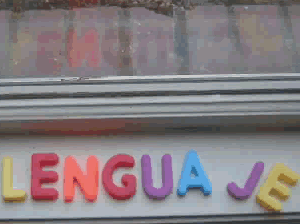 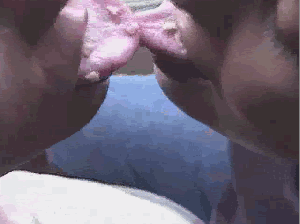
[from "Lengua(je"]
In the textual and visual anthology, Jim Andrews' visual piece entitled “Nio Onion Skin 3” produces a similar sublime feeling as its eerie image of a swimming pool blue colored X thrusts itself (and its similarly colored shadows) through a pitchblack ether, suggesting both the feelings of intense human connection and utter isolation. The effect is a sort of partnership, as the letter as object is paired so heartbreakingly with the absence of object—black space. This partnership is a variation on the one in the oWEns and Gonzalez video, as blue letter is physically connected to the blackness that surrounds it, yet still seems forever disconnected from it. In the piece, language (seen as a letter) becomes a kind of body that must deal with the magnitude of the black space, seen everywhere. Andrews' work here reminds me of one of my favorite scenes in Kubrick's classic 1968 Space Odyssey 2001 , as the computer HAL murders the astronaut Frank Poole and we see him floating in the blackness of the universe, completely helpless in the midst of its magnitude. In the movie, astronaut Dave Bowman rescues his crew member, but there is no one to rescue the lonely X here and the viewer can only helplessly witness this sort of murder.
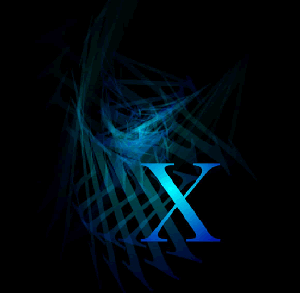
["Nio Onion Skin 3"]
Paul Lambert's two pieces, “Guy 12” and “Guy 15” showcase a similar kind of tension between our most intimate and impersonal human experiences, as both “Guys” (the result of thickly and brightly colored computer-drawn Modernist portraits) seem to look longingly towards some unseen point, all the while surrounded in a cacophony of black and white words. In this piece, human form is partnered with language, producing an endless dance between human body and the bodily form of language. Here, Lambert asserts that both human and word body are physical objects that have to eternally deal with each other in order to make meaning. In the end, the Whitewall of Sound Issue #35 achieves a worthy accomplishment. Through the most basic deliberations of color, sound, form, and alphabet, this anthology shows a higher kind of deliberation, as throughout the entire issue, objects (humans, letters, colors, and forms) work together as forever connected and disconnected world bodies. Thankfully (as this is not always the case), the kind of heartbreaking partnership found in this anthology is truthfully portrayed.
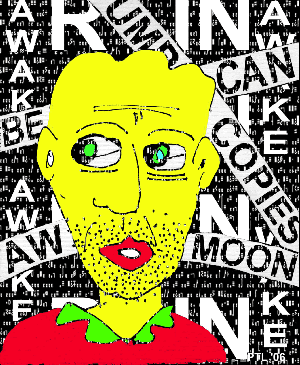 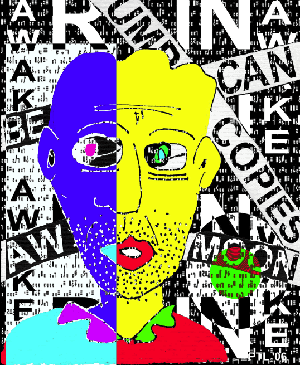
["Guy 12" and "Guy 15"]
|
![]()
![]()